Complete Guide to Textile Fibers: Natural, Artificial and Synthetic
|
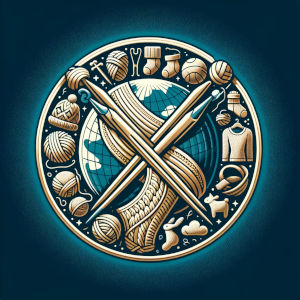 |
|
Let's explore the world of firbes, from natural to synthetic ones
|
|
THE NATURAL FIBERS
|
|
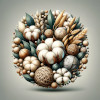 |
The treasures of our planet, a journey through the gifts of nature, exploited without altering their essence.
From carding by the traditional method, that is, by hand, to the first known mechanical carding machine, which dates back to 1760 by Paul Lewis. Although we have moved on to industrial processing in the present day, the structure of the fibers has never been changed, only the processing perfected.
|
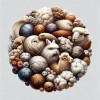 |
THE NATURAL FIBERS FROM ANIMALS
|
|
Alpaca, Cashmere and beyond...
|
|
|
This type of fiber is divided into two subgroups:
- fibers from hairball animals
- fibers from seropterous insects
Let us explore together the wonders of these two groups.
|
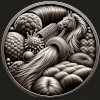 |
Animal fibers from hair bulb
|
|
 |
Alpaca: is obtained from the hair of a camelid living in the Andes, very similar to the llama but smaller. The average yield is 300 grams of hair per animal. The fleece on the outside is coarse and rough, while the undercoat is soft and woolly with fibers 24/25 microns in diameter. The characteristics of the resulting yarn are uniquely soft.
|
 |
Baby alpaca: is obtained from the hair of baby alpacas and is particularly prized for fineness and silkiness. |
 |
Angora: comes from the hair of Angora rabbits (raised mostly in China) that are sheared every three months to obtain about 300 grams of fiber. The fiber is lustrous, warm and soft and usually blended with wool because it is so delicate. |
 |
Camel: is obtained from the hair of the two-humped camelid that lives in the deserts of Central Asia. Again, it is not the surface hair that is sheared, but the very soft duvet or undercoat, which has an average diameter of 19 to 20 microns, is usually reddish and light brown, and has great thermal properties. |
 |
Cashmere: is obtained by combing the undercoat (or duvet) of goats raised in Mongolia, China and Iran (less valuable). The color is generally white, but there are types tending toward brown, reddish and gray. Chinese duvet, perhaps the finest, has an average diameter of 15 microns ( 14.5 to 15.5) and is very soft, fluffy and silky. There is also the "yangir" type, which has the absolute finest undercoat of about 13 to 13.5 microns. |
 |
Beaver: from a rodent of the Castoridae with a stocky and robust body, a fine fur also used for felts is obtained. |
 |
Horsehair: is the hair from the mane and tail of various animals, especially the horse. It is used for padding or in special weavings. |
 |
Guanaco: is a South American camelid that lives in the wild. In ancient times it was intended to dress Andean emperors and priests. The coat is wheat-colored, and because it is necessary to kill the animal in order to take it, even in ancient times there were restrictions on hunting. |
 |
Lama: is a domestic South American camelid with a white, burnt brown, gray, and black coat that is thick and ordinary on the outside, while the undercoat is shiny and warm. |
 |
Wool: is the most widely used animal fiber and is made from the fleece of various breeds of sheep (the most famous being the "merino" sheep), raised in Australia, New Zealand, Argentina, and South Africa. There are many varieties that can be classified according to fineness, length, color, softness and luster. Each yarn also has a count, which is given by the ratio of length to weight: the higher the count, the finer the yarn. Due to its structure and the dense wrinkling of the fibers, it has qualities of hygroscopicity (absorbs moisture by weight up to 18/25%), insulation (strong thermal protection), elasticity, resistance to wear and tear and flame, bending and is able to lose unsightly creases. Lanolin used in adhesives, lubricants and cosmetics is made from wool washing water. Marks: the "Pure Virgin Wool" mark managed by Woolmark certifies that the garments are made of 100 percent shearing wool and therefore not regenerated. |
 |
Lambswool: distinguishes lamb's wool (shorn then around 4 months old) more valued than sheep's wool for certain variations. |
 |
Otter: From a mammal of the Mustelidae comes a thick, soft coat |
 |
Mohair: it is the angora goat (from Ankara) raised in central Anatolia, but now also in South Africa and Texas, that provides this fiber of the average fineness of 25 microns. The most valuable type has a milk-colored coat, but there are black, brown and pink varieties. Its fleece is less wrinkled than that of sheep's wool and is therefore shinier. |
 |
Kid mohair: is obtained from angora kids. Its fiber is finer than mohair, having an average fineness of about 24 microns. |
 |
Vicuna: is a small South American camelid protected by the Peruvian state. It is graceful, shy and very quick to jump. Its fur is very fine (12/14 microns) and very soft, especially that of the neck. The coat color is almost the same in all individuals and is blond/reddish in color. It was feared in the past for its extinction, now averted by countermeasures: it is bred and combed to obtain the valuable duvet. |
 |
Yack: is a Bovidae mammal that lives on the Tibetan highlands at altitudes between 4,000 and 6,000 meters above sea level. The hair is coarse and is used for mats and sacks, while with the undercoat around 19 microns, very fine dark-colored fabrics are made. |
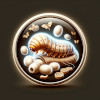 |
Animal fibers from seropterous insects
|
 |
Silk: is the only animal fiber produced by a serigenous silkworm that feeds on mulberry leaves, the "bombix mori" or other tree-grown worms (wild silk "tussah"). Silk processing ranges from drying to reeling, that is, softening in hot water and unraveling. From a cocoon, 800 to 1000 meters of filament consisting of two matching triangular-section burls are obtained. Being a very thin and lustrous continuous filament it is light, heat insulating, elastic, flexible and is considered the finest and softest of natural fibers. The yarn can be long and twisted and therefore strong, while "bourette," obtained from silk waste from combing, has short fiber and is less strong. Between the two yarns is the discontinuous "shappe" type, which offers good strength. |
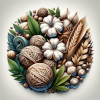 |
THE NATURAL FIBERS FROM PLANTS
|
Cotton, Linen and Other Natural Wonders...
This type of fiber is divided into four subgroups:
- Plant fibers from seed;
- plant fibers from book;
- plant fibers from leaf;
- plant fibers from fruit.
It is an amazing variety, from the earth to your home.
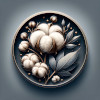 |
Plant fibers from seed
|
 |
Cotton: is the most beloved, versatile, and widely used plant fiber in the world and is made from the capsule of the plant "Gossypium herbaceum" grown in Egypt, Sudan, Peru, some tropical islands, California, and China. Cottons are classified according to their count, while the length of the fibers determines their quality: the longer it is the more lustrous, durable and valuable the cotton is. It has excellent hygroscopicity and thus absorbs perspiration, good toughness, heat resistance, excellent physiological adaptability and dyeability. Because its strength increases when wet, it is the most washable of fibers even at high temperatures and with alkaline detergents. Trademarks: the "Filoscozia" trademark managed by the Filoscozia Promotion Center guarantees the superior quality of fine Egyptian long-fiber cottons (Makò), combed, twisted and yarn mercerized. The resulting yarn acquires a silky sheen. |
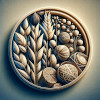 |
Book plant fibers (woody part of the plant)
|
 |
Abaca: also called "Manila hemp," is obtained from a tropical plant in the Musaceae. |
 |
Hemp/Canapa: Is taken from the stem of the Cannabaceae plant of the same name. Characteristically rustic fiber. |
 |
Jute: is made from Tigliaceae plants, used mainly for sacks. |
 |
Linen/lino: Elegance and comfort, it is the oldest and most valuable natural fiber, taken from the "book," the cortical layer, of Linum usitatissimum. It comes from the only textile plant also cultivated in Europe and varies according to its origin (Belgium, Russia, Ireland, Italy). It is obtained by maceration processes of the fibrous part: chemically, the cells that make up the fibers are both tough and elastic. Because of its particular molecular structure it has qualities of hygroscopicity (absorbing water up to 12% of its weight), wear resistance, tenacity, durability, resistance to high-temperature washing, and comfort on contact on the skin because of its freshness. Being more lustrous than cotton, it should not be mercerized. Marks: the "Master of Linen" mark of the Center for the Protection of Linen guarantees the quality of linen produced, spun and woven in Western Europe. |
 |
Ramiè: Is taken from an herbaceous perennial plant of the Urticaceae. |
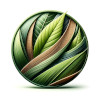 |
Le fibre vegetali da foglia
|
 |
Alfa: si estrae dalle lunghissime foglie di una pianta erbacea delle Graminacee delle regioni subdesertiche del Nord Africa. |
 |
Alga: si estrae dalle foglie delle alghe marine bianche e brune. Oltre all'utilizzo in farma – cosmetica, la pasta viene lavorata per ottenere una fibra dalle proprietà termoregolanti e con vantaggi per il benessere del corpo e della mente. |
 |
Ginestra: è estratta per macerazione dalla pianta omonima delle Leguminose. |
 |
Kenaf o ibisco: si estrae dall'Hibiscus, un genere di Malvacee tropicali. |
 |
Rafia: è fornita dalle foglie giovani di una palma dell'Africa Orientale, la "Raphia ruffa" e la "Raphia peduncolata". |
 |
Sisal: è ricavata dalle foglie di una varietà di agave. |
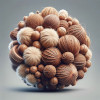 |
Le fibre vegetali da frutto
|
 |
Cocco: si estrae dal mesocarpo del frutto della palma da cocco (noce di cocco) della famiglia delle Palme. Le fibre sono molto robuste. |
 |
Kapok: è la bambagia che riveste internamente la capsula del frutto di varie piante tropicali delle Bombacacee. E' usato specialmente per imbottiture. |
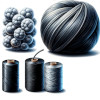 |
LE FIBRE MINERALI
|
|
 |
Amianto o asbesto: è una fibra di cristalli filamentosi di silicati di vario tipo che erano usati per la loro incombustibilità, ma ora abbandonate dopo la scoperta del loro effetto cancerogeno |
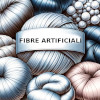 |
LE FIBRE CHIMICHE
|
L'innovazione tessile al tuo servizio
 |
Le fibre artificiali cellulosiche
|
| Da materie prime naturali a tessuti innovativi... |
Innovazioni e Versatilità nel Tessile sorprendenti dalla natura trasformata, queste fibre si chiamano cellulosiche perché si ottengono trattando la cellulosa naturale (la stessa che costituisce le fibre vegetali) di piante ad alto fusto come faggio, eucaliptus, conifere ecc., opportunamente trasformata e sciolta con solventi, e successivamente filata sotto forma di fibra tessile in filo continuo, oppure in fiocco (fibra discontinua).
 |
Acetato: è un filo continuo derivato dalla cellulosa. Ha una mano morbida e delicata, aspetto serico, colori vivi e brillanti, buone doti di traspirabilità, igroscopicità, antistaticità e comfort. Marchi: "Situssa", "Situssa Fresh", "Silene", "Silfresh", "Silcolor", "Novalene", "Silnova", "Dicelesta" by Novaceta. |
 |
Carta tessile: è una fibra ottenuta dalla cellulosa il cui filo trattato chimicamente ha una mano inamidata e cartacea. |
 |
Cupro: è una fibra ottenuta dai linters di cotone trattati secondo il processo cuprammonio ed è prodotta sia come filo continuo sia come materia prima. E' atossica, anallergica, antistatica ed ha doti di traspirabilità e morbidezza: per questo è detta "seta ecologica". Marchi: "Cupro", è un'esclusiva "by Bemberg". |
 |
Lyocell: deriva dalla cellulosa del legno ed è una fibra ottenuta da un processo di filatura in solvente organico. E' resistente, traspirante, lavabile e ha ottima resa tintoriale, oltre a essere luminosa e morbida. Marchi: "Lyocell" by Lenzing; "Tencel" by Acordis. |
 |
Modal: è un fiocco di viscosa modificato, con buone caratteristiche di impiego grazie a tenacità e stabilità dimensionale. La mano è morbida e l'ottica è brillante. Marchi: "Modal" e "ProModal" (Modal 30%/Lyocell 70%) by Lenzing. |
 |
Viscosa: detta anche rayon, è ottenuta dalla cellulosa ed è disponibile sia in filo continuo che in fiocco. Ha mano dolce e aspetto serico, buona resistenza all'usura ed elevata capacità igroscopica. Esiste anche versione "fr" (filame retard) ed alta tenacità. Marchi: "Viscose" e "ProViscose" (70% viscosa/ 30% Lyocell) by Lenzing; "Enka Viscose" by Acordis; "Rayon FCT2000", "Argentea", "Iriden " by Nuova Rayon (Snia Group); "Sicrem" (alta tenacità) by Sicrem (IVG Group). |
Le fibre artificiali proteiche
Le nuove frontiere del tessile...
Si ottengono sia da proteine di origine animale (la caseina del latte), sia da quelle di origine vegetale (la zeina del mais e l''arachina dalle arachidi). A differenza di altre fibre tessili costituite da macromolecole orientate e quindi di forma fibrillare, le fibre proteiche hanno struttura globulare. La fibra "Promix", prodotta dalla caseina del latte, ha un aspetto serico, elevata stabilità dimnesionale, proprietà igroscopiche e di traspirabilità. Marchi: "Chinon" by Toyobo-Itochu.
Le fibre artificiali alginiche
Sono filati ottenuti dal trattamento con sali dell'acido alginico (estratto da diverse specie di alghe marine) disciolti in soda saponata. Si impiegano anche quale rinforzo temporaneo in tessuti ottenuti da fibre molto sottili, in quanto possono essere separati dal tessuto per mezzo di un lavaggio con acqua e con una soluzione debolmente alcalina.
 |
LE FIBRE CHIMICHE SINTETICHE
|
| La rivoluzione dei materiali tessili... |
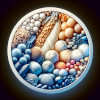 |
Le fibre sintetiche organiche
|
| Nylon, Poliestere e Oltre... |
Dal laboratorio alla moda, queste fibre derivate da sostanze organiche di sintesi che vengono polimerizzate ottenendo lunghe catene molecolari, le macromolecole, filabili sotto forma di filo continuo o di fiocco (fibra discontinua). La materia prima delle fibre sintetiche è fornita dalle industrie petrolchimiche. Filo e fiocco sono spesso disponibili già tinti (tinti in massa) dal produttore.
 |
Acrilica: è una fibra costituita da macromolecole, prevalentemente di acrilonitrile,in genere usata sotto forma di fiocco, ed è disponibile anche in microfibra. E' leggera, morbida, voluminosa, dalla mano lanosa e calda, irrestringibile, inattaccabile da muffe e microrganismi, con ottima tingibilità e resistenza alla luce solare. Marchi: "Courtelle" e "Amicor" by Acordis; "Drslon" by Bayer; "Leacril", "Myloss" e "Ricem" by Montefibre. |
 |
Aramidica: è una fibra di poliammidi aromatiche, disponibile sotto forma di fiocco o di filo continuo. E' resistente alla fiamma e nel caso del para-aramide (Kevlar) è anche resistente al taglio e all'abrasione. Marchi: "Kevlar" e "Nomex" by DuPont; "Twaron" by Acordis; "Tecnora e Conex" by Teijin. |
 |
Clorofibra: si ottiene dalla polimerizzazione del cloruro di vinile o del cloruro di vinilidene. Più che idrorepellente, la fibra è insensibile all'acqua mantenendotenacità, elasticità e allungamento sia a secco che a umido. E' fr (flame retard). Marchi: "Rhovyl" by Rhovyl. |
 |
Elastan: è una fibra composta da una base di poliuretano segmentato a elevata elasticità mescolato con altre componenti. Non si deforma ed è resistente ai lavaggi. Ha elevata elasticità e allungamento fino 6 volte la lunghezza iniziale e mantiene inalterata nel tempo la sua forza di rientro. E' resistente agli agenti ossidanti e all'acqua clorata. Può essere usata pura o, più spesso, in mischia con altre fibre conferendo loro elasticità. Marchi:"Lycra" by DuPont; "Dorlastan" by Bayer; "Linel" by Fillattice. |
 |
Flourofibra: è una fibra ottenuta da derivati flourati. Idrorepellente e termoresistente, è disponibile anche in forma di pellicola (membrana) microporosa per capi impermeabili. Marchi: "Teflon" by Du pont. |
 |
Gomma sintetica: ha proèrietà elastiche simili alla naturale ed è ottenuta con processi di polimerizzazione a caldo e a freddo in presenza di catalizzatori. |
 |
Modacrilica: è una fibra ottenuta da macromolecole costituite per almeno il 50% da acrilonitrile, disponibile generalmente in fiocco. Ha una mano morbida, ottima resistenza alla fiamma, tenacità, doti di coibenza termica, stabilità dimensionale, buona tingibilità. Marchi: "Lufnen" by Kanebo; "Kanekaron" by Kanegafuchi. |
 |
Poliammidica o nylon: è ottenuta da macromolecole contenenti il gruppo ammidico. E' usata sia in filo continuo che in fiocco. Ha un'elevata resistenza alla rottura, alla deformazione e all'abrasione, è di facile manutenzione (lavaggio, asciugatura, no stiro), ottima tingibilità e ingualcibilità. E' morbida e leggera. I fili sono prodotti in diverse sezioni per ottenere effetti estetici efunzionali ( ad es. il nylon trilobato è particolarmente brillante). Marchi: "Meryl" e "Meryl Nexten" by Nylstar; "Tactel" by DuPont Nylon; "Ortalion" by Bemberg; "perlon" by Bayer; "DoubleSix" e "Radilon" by Textile Produkte (Radici Group); "Noval" by Rhodia Performance Fibres; "Enka Nylon" by Acordis; "Aqualon" by Aquafil (Bonazzi Group). |
 |
Poliestere: la scelta ideale per un tessuto facile da mantenere e resistente, si ottiene da macromolecole di polietilentereftalato (PET). Esiste anche in versione "flame retard" e come microfibra. Ha elevata resistenza alla rottura, elasticità e ripresa. E' ingualcibile ed è una "lava indossa" (si lava falcimente, asciuga rapidamente, non occorre stiro). E' disponibile anche nei tipi modificati a partire da macromolecole di polibutilentereftalato (PTT). I fili sono prodotti in diverse sezioni per ottenere effetti estetici e funzionali diversi. Marchi: "Terital" e "Fidion fr" by Montefibre; "Mirhon", "Micrhon", "Silkiss", "Wolkiss" by Gruppo Miroglio; "Trevira" by Trevira; "Starlight" by Noyfil (Radici Group); "Pontella", "Comforto", "Corterra", "Setila"; "Estrell" by Aquafil (Bonazzi Group); "Filanda", "Airlain", "TXT", "Valtrompia" by Gruppo Sinterama; "Elitè" by Nylstar; "Diolen" by Acordis; "Dracon" by Du Pont; "Polifill", "Terbond" e "Texbond" by Freudenberg Politex. |
 |
Polietilenica: a base di polietilene, è usata per l'estrema resistenza alla trazione. Marchi: "Spectra" by Allied; "Dyneema" by DSM. |
 |
Polipropilenica: è ottenuta da macromolecole di polipropilene isotattico, disponibile come fiocco o come filo continuo. Solida ai colori, leggerissima, ha elevata resistenza meccanica, buona resistenza all'abrasione, non assorbe i liquidi e quindi ha proprietà antimacchi, facilità di manutenzione ed è traspirante. Marchi: "Meraklon" by Meraklon; "Arlene" by Aquafil (Bonazzi Group). |
Le fibre sintetiche inorganiche
I tessuti del futuro...
 |
Acciaio, rame, argento, zinco, titanio, oro: sono filati e usati in mischia con altre fibre per le loro doti di rigidità, preziosità (oro e argento), cromatiche e antistress (acciaio, rame e titanio). |
 |
Carbonio: le fibre sono ottenute per pirolisi o dell'acrilico pre-ossidato (PAN) oppure di un precursore a base di pece di petrolio. Hanno doti di altissima resistenza e di leggerezza. I fili sono spesso mescolati ad altri (ad es. a poliammide) nell'abbigliamento per ottenere performances "antistress" o effetti di mano. Marchi: "Panox" e "Silgrafilc" by SGLCarbon; "Fortafil" e "Tenax" by Acordis. |
 |
Ceramica: sono fibre a base di silicio, boro e alluminio modificati. Sono usate per la loro capacita di resistere ad altissime temperature e per la proprietà termoriflettente. |
 |
Vetro tessile: dalle fibre di vetro si ottengono veri e propri fili di vetro assai flessibili e sottili, continui o corti, di composizione variabile: sono usati in mischia per rinforzare altre fibre. |
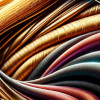 |
Altre fibre chimiche
|
Nuove frontiere nel tessile
 |
Alcantara: è un marchio della Alcantara che identifica una serie di tessuti realizzati in mischie a base di ultra-microfibre di poliestere/poliuretano. |
 |
Lurex: è un marchio della "Sildorex". Un film di poliestere o poliammide è metallizzato con vapori di alluminio o di argento e successivamente tinto per ottenere fili di aspetto metallico. |
Grazie alla profonda conoscenza e allo studio delle fibre tessili maturata in più di trentanni di attività, abbiamo cercato di sfruttare al meglio le caratteristiche tecniche dei singoli filati in sinergia con punti maglia adeguati per la tipologia di utilizzo, sviluppando articoli di eccellenza e duraturi nel tempo.
Nello Store trovate il meglio, testato in laboratorio, testato sul campo, prodotti di eccellenza tutti Made in Italy, controllando ogni singolo passaggio produttivo, proprio perché interno all'azienda.
Su alcuni prodotti siamo in grado di personalizzare, per saperne di più contattateci














